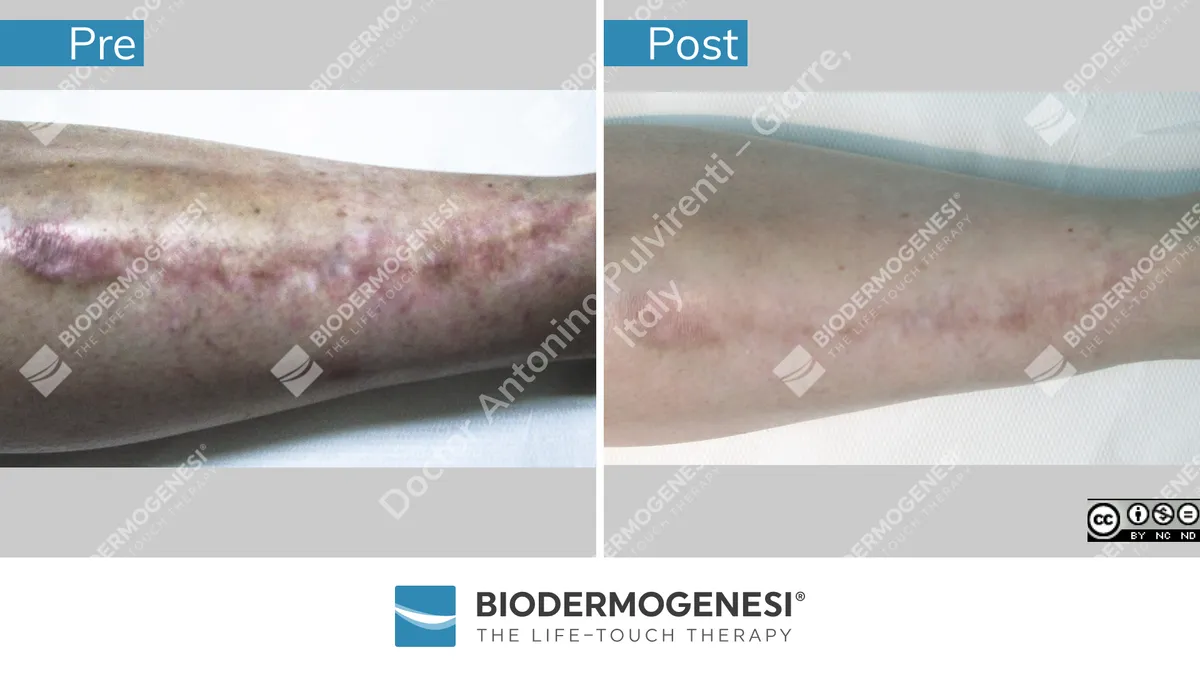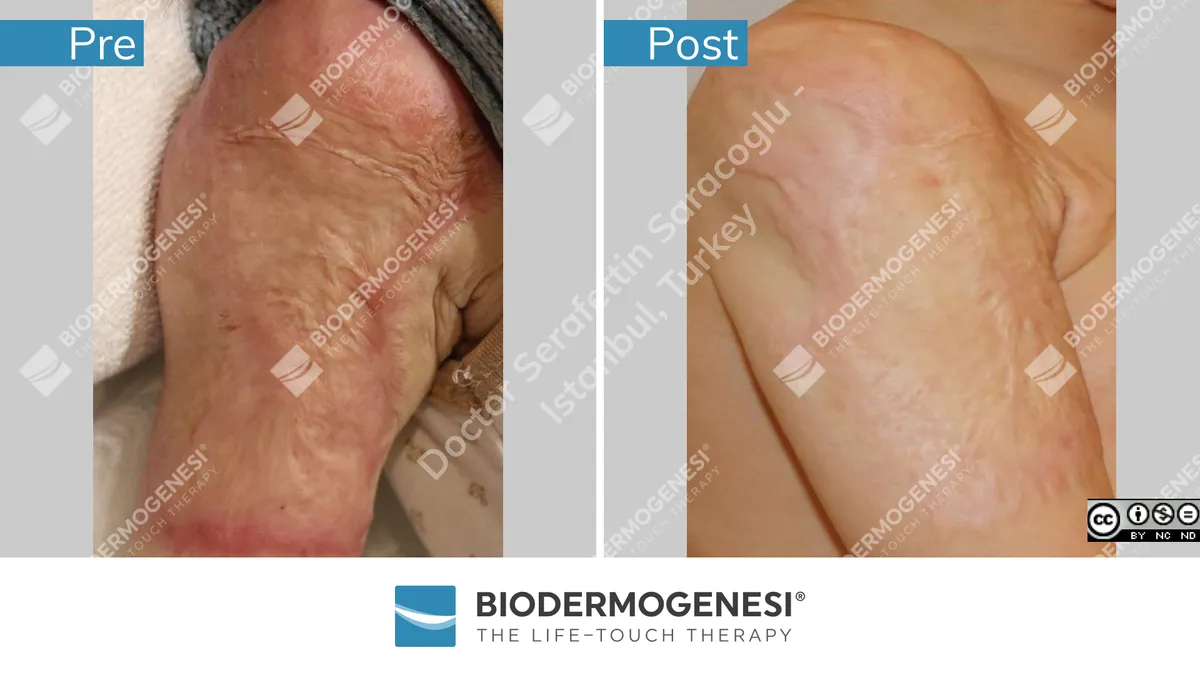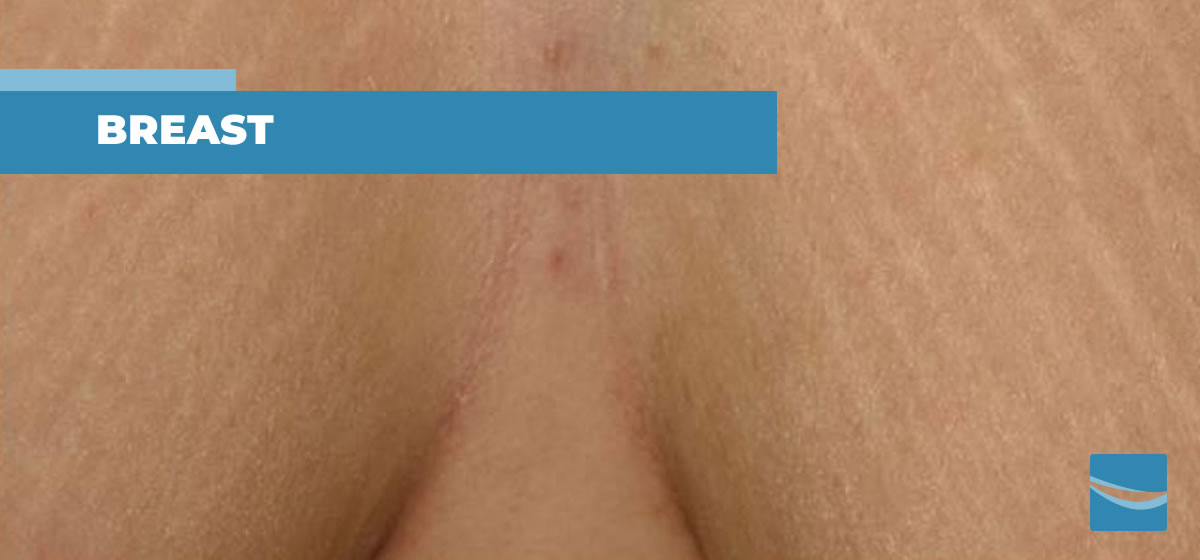The importance of scar hydration
Every year in peacetime, there are around 100 million people with new scars in developed countries alone. Of these, 55 million are related to post-surgical elective outcomes, 25 million are due to post-traumatic surgery, while the remaining 20 million are of a different nature [01].
Scars are also important for the large number of effects they have on the social life of the patient. From the psychological point of view, scars are a strong cause of discomfort in patients, so much so that they significantly limit social life, self-esteem and interpersonal relationships [02], especially for patients with facial scars.
It seems clear that, if a general scar causes discomfort, the facial scar, even if small and not severe, in many patients causes a real emotional block, determining anxiety and the belief that they cannot have a normal social life [03, 04].
Being the scar the consequence of a lesion of the skin of various nature (post-surgical, from trauma, from abrasion, from burn, chemical, etc.), there is a laceration of the stratum corneum and epidermis that causes a dangerous alteration of our skin’s barrier functions, which lasts until the stratum corneum is perfectly restructured. It usually takes more than a year after trauma to fully recover the functions of the damaged skin [05].
Among the various functions of the skin, the most critical is to prevent loss of moisture that causes a delay in wound healing and is the cause of hypertrophic, fibrotic and keloid scars [06, 07].
Until now, the loss of moisture has been reduced by adopting silicone films to be applied over the scars, creating a barrier that retains water inside the lesion ]08, 09]. This solution has proved effective but requires continued use of such films, the removal of which reactivates the loss of hydration. The Biodermogenesi® therapy was particularly interesting, as it has been shown to block the loss of hydration and even increase it during sessions, until the normal level found in healthy and undamaged skin is restored.
To increase the level of hydration of scars, six to eight sessions are needed, performed one per week; the treatment is extremely pleasant and relaxing and also allows an important aesthetic improvement of the scars [10, 11].
Bibliographic references:
- Sund B. New developments in wound care. PJB Publications, London, pp.1-255 (2000)
- Naage M, Agius M. The psychology of scars: a mini-review. Psychiatria Danubina, 2018; Vol. 30, Suppl. 7, pp.633-638
- Tebble NJ, Adams R, Thomas DW, et al. Anxiety and selfconsciousness in patients with facial lacerations one week and six months later. Br J Oral Maxillofac Surg 2006;44:520–5
- Natalia Ziolkowski, Simon C Kitto, Dahn Jeong, Jennifer Zuccaro, Thomasin Adams-Webber, Anna Miroshnychenko, Joel S Fish. Psychosocial and quality of life impact of scars in the surgical, traumatic and burn populations: a scoping review protocol. BMJ Open 2019;9:e021289
- Suetake T, Sasai S, Zhen YX et al. (1996) Functional analyses of the stratum corneum in scars. Sequential studies after injury and comparison among keloids, hypertrophic scars, and atrophic scars. Arch Dermatol 132:1453–8
- A. Zhong, W. Xu, J. Zhao, P. Xie, S. Jia, J. Sun, R.D. Galiano, T.A. Mustoe, S.J. Hong. S100A8 and S100A9 are induced by decreased hydration in the epidermis and promote fibroblast activation and fibrosis in the dermis. The American Journal of Pathology, Vol. 186, No. 1, January 2016
- Elias PM (2005) Stratum corneum defensive functions: an integrated view. J Invest Dermatol 125:183–200
08 Ahn ST, Monafo WW, Mustoe TA (1989) Topical silicone gel: a new treatment for hypertrophic scars. Surgery 106:781–6 - Mustoe TA, Cooter RD, Gold MH et al. (2002) International clinical recommendations on scar management. Plast Reconstr Surg 110:560–71
- Nicoletti G, Perugini P, Bellino S, et al. Scar Remodeling with the Association of Monopolar Capacitive Radiofrequency, Electric Stimulation, and Negative Pressure. Photomed Laser Surg 2017; 35(5):246-258
- Veronese S, Beatini AL, Urbani C, Lanza E, Mosquera Paz O, Saussaye Y, Lomuto M, Sbarbati A. V-EMF treatment of facial scar: First results. J Tissue Viability. 2022 Nov;31(4):614-618. doi: 10.1016/j.jtv.2022.07.006. Epub 2022 Jul 15





